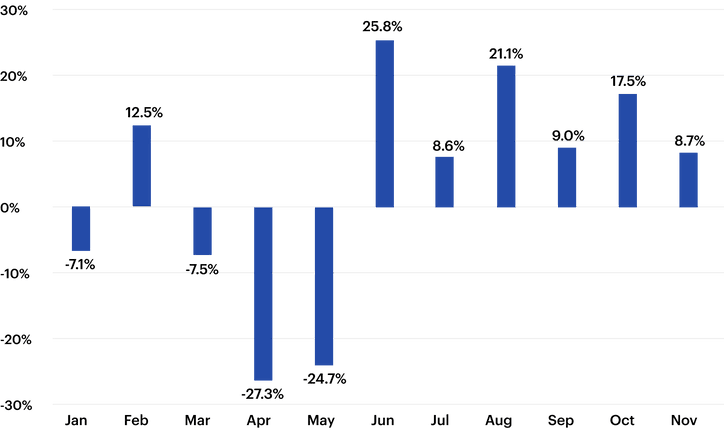Results
We initiated this Trend Report as a way to answer our own questions. How has the world changed for entrepreneurs? What about the customers? What new habits are here to stay? What skills businesses need to pick up in order to be competitive, resilient and successful moving forward? We talked to our partners and friends who also help entrepreneurs and have a vision. Here’s what we found.
The Baby Business Boom
Small and medium businesses have become a force of their own: they are successfully competing against the big companies, which makes sense as they are fast to adapt, they provide personalized service, and risk venturing into new niches.
It helps, too, that they now find it easier to get financed — their economic potential is finally recognised by all players in the financial sector. The governments design support systems, investors have cash to spare, challenger banks compete against the traditional ones in offering them services. There is however still a lot to be done to cover the underserved 51% of Southeast Asia SMEs.
Yet people felt reassured to move into entrepreneurship: opening a small business has become an alternative to having a job. The monthly number of companies started in Singapore has been growing since June, a tendency that wiped out the negative effect of the covid spring months.
New businesses opened in Singapore in 2020 vs 2019

Source: ACRA statistics
The speed at which the density of business population grows will continue to accelerate. Today countries like the UK or Australia have 15 companies per 1,000 of their population. There is nothing to stop them — and the rest of the world — from doubling up.
Small is the New Big, Fast is the New Sexy
We’ve downsized a lot over the past year, reevaluating roles, spaces, and business lines. In a serendipitous correlation, every purchase seems to have shrunk: from your food delivery basket to the average size of an investment deal. But small doesn’t mean few: we’ve generated more orders and investors funded more companies.
The reason we feel so confident in grabbing everything bit by bit is because the speed of transaction has never been higher. As e-commerce is competing against q-commerce for the customers’ wallets, we get used to quenching a thirst fast.
This incredible ease of making a purchase makes customer time that much more valuable. If you are going to spend an hour on something, it better be good — a line of reasoning that pushes education platforms to rise against Netflix and Youtube in their fight for the customers’ time.
From these approaches to clients’ time, two opposite digital fields form. On the one end, an array of businesses excelling at cutting down the time spent on necessities, whether shopping, admin, or taxes. On the other, a fascinating selection of the ways to reinvest the time you saved into learning, having fun, mental wellbeing, or growth.
Customer Creators
Service is king, we know that, but the king now rules ruthlessly. The customer expectation bar is raised high, as they want the service to be both seamless and personalized. That includes: being easy to find, no-hassle navigation, getting offered exactly what they came for, fast, convenient, reasonably priced, and with a popping brand experience. Anywhere, anytime, with a friendly promotion, please.
There is a lot to win from this battle: in Southeast Asia alone 40 million new users have joined the digital market, experiencing online products for the first time in their lives. They assimilate fast, and are in no mood to leave — two thirds of the digital pilgrims are reportedly staying.
There is but one way to truly benefit from this meticulousness and it is to recruit the customers to become your allies. Only by letting them be a forming force in the way your business is set up and tuned can you ensure a sweet sailing. Long gone are simple questionnaires and custdev interviews: customers become co-creators and co-founders, engaging in the core fabric of the day-to-day decision making and product design. New formats of customer communication take over: creating platforms for suggesting, testing, and evaluating product features, running customer hackathons, inviting them to internal meetings and structuring teams within the customer community.
The Way We Live
These are the key take outs we found for ourselves and we intend to live by them. You might discover other answers applicable to your business and your journey. We’re happy to have been of help — and excited to start the new chapter.
